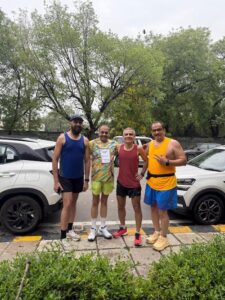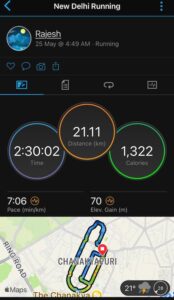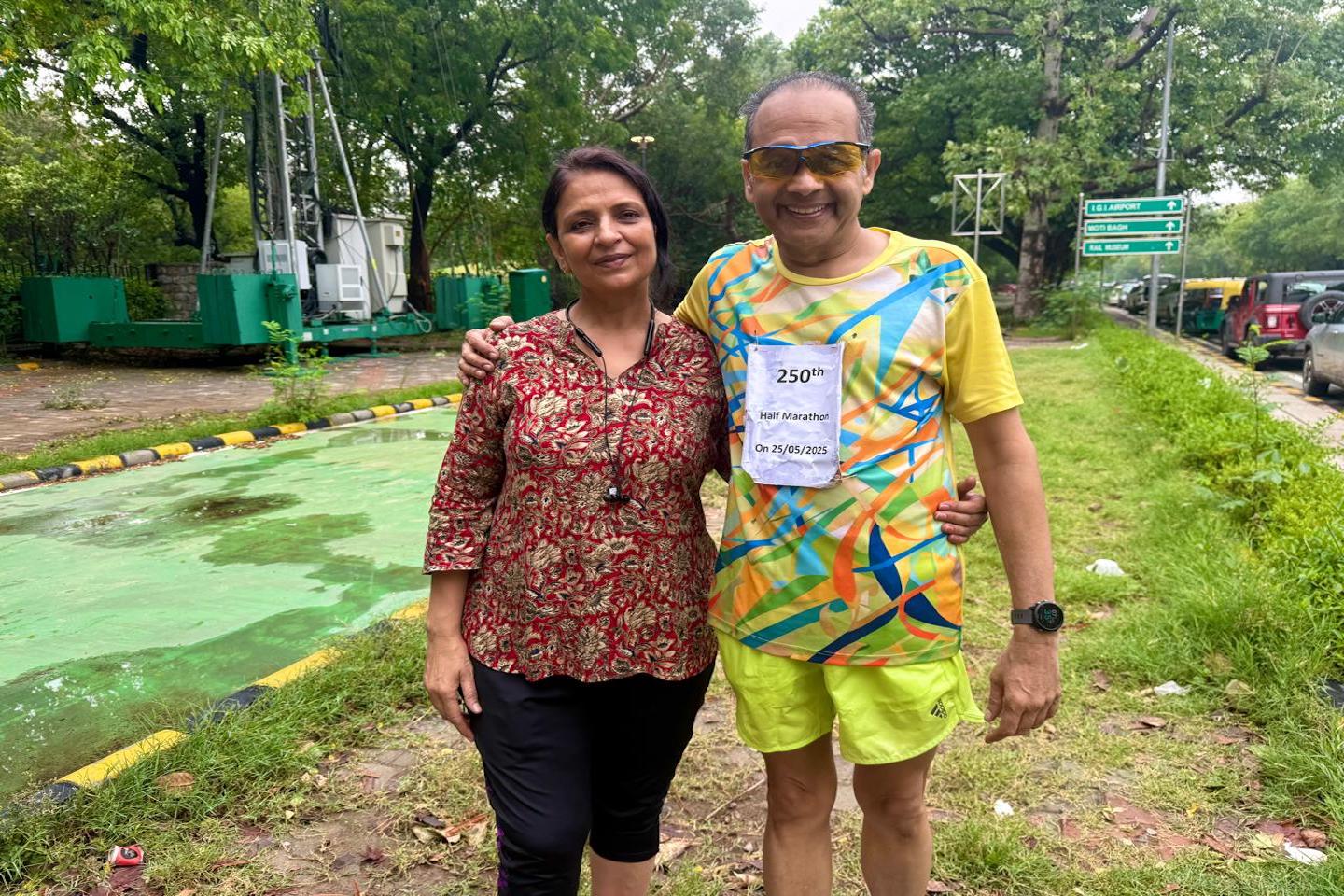Tips for attaining physical fitness and avoiding stroke – Dr Rajesh Acharya
India
healthysoch
New Delhi, May 245 2025:
 Dr. Rajesh Acharya, Senior Neurosurgeon at Sir Ganga Ram Hospital, New Delhi, a avid runner and fitness enthusiast. He had started running after 53 years of age and have successfully completed more than 140 half marathon in last 9 years. Today on 25-5-25 , he ran 21 kms, his 250th Half Marathon , at Nehru Park, Shanti Path, New – Delhi.
Dr. Rajesh Acharya, Senior Neurosurgeon at Sir Ganga Ram Hospital, New Delhi, a avid runner and fitness enthusiast. He had started running after 53 years of age and have successfully completed more than 140 half marathon in last 9 years. Today on 25-5-25 , he ran 21 kms, his 250th Half Marathon , at Nehru Park, Shanti Path, New – Delhi.
Stroke occurs when blood supply to any part of the brain is reduced, brain cells beginning to die in minutes. One in four people are at risk of suffering from stroke. Stroke is a medical emergency mainly due to diabetes, hypertension, heart disease and obesity: most of which can be prevented by moderate to
vigorous physical activity.


life. It is correctly stated that HEALTH is the actual WEALTH that a person can retain. Regular exercise may keep our body 30-years younger.
Tips for Running Above 50-Years of Age
Dr. Acharya says, “Running is a safe, healthy exercise for people of any age. It’s never too late to start. These useful tips will help you to start jogging and then running as these have been experienced personally and followed
religiously by me.
“Running is a kind of investment in yourself”.
1. Green Signal from your Doctor: By the time you hit 50, you have acquired a health risk or two – heart, lung or joint issues – or experienced a major disease. If you’re brand-new to running or you’ve had a lengthy break from the sport, it is preferable to check with your doctor and get medical clearance. Chances are he or she will encourage you to get started but it’s important to get the stamp of approval.
2. Adjust Your Goals: As we get older, we lose muscle strength and aerobic capacity and we need more recovery time, so we just can’t train and race at the same level, as a young runner. That doesn’t mean that you can’t set goals to help motivate and give you a serious sense of accomplishment. Adjust your expectations, pick realistic goals, and be proud that you’re still being an active, committed runner.
3. Proper Rest: While you may have been able to run every day in your younger years, as you age, you’ll probably find that you don’t bounce back as quickly as you used to. Listen to your body and don’t force runs if you’re not feeling recovered. Days off from running don’t have to be complete rest days. You can do cross-training activities such as cycling, swimming or yoga.
4. Strength Training: Strength-training is beneficial for runners of any age, but those benefits are even more significant for older runners. People naturally lose muscle mass as they age, but regular strength training can help you avoid the decline which eases the stress on your joints. Simple leg and core exercises such as squats, planks, push-up and lunges can make a big difference in your running performance and injury resistance.
5. Work on your Balance: You can work on improving your balance simply by standing on one leg (and alternating legs) for 30 seconds. Or, do some basic yoga balance moves such as tree pose, eagle pose or king dance pose.
6. Flexibility: Everyone’s muscles and tendons lose some elasticity with time. But you can maintain or even improve your flexibility if you work on it. Regular stretching or doing yoga, especially after runs, can help you become more flexible. You also should make sure you do a proper warm- up before running. Start with a 5-10 minute walk or easy jog, followed by some dynamic stretching. Examples of dynamic stretching would be arm circles, heel raises, or lunges.
7. Injury Prevention: Be proactive in your approach to injuries and don’t ignore the warming signs of an injury. As you age, you may find that you need to take new injury-prevention steps, such as regular massages, using a foam roller, and more rest days.
8. If you get injured, be patient: As we get older, it does take longer to recover from injuries. Don’s rush back to running too quickly, as you may find yourself out for even longer than necessary. Listen to your
body, take a break from running, and see a doctor if you have injury- related pain that lasts more than one week.
9. Hydration: We lose fluid by sweating, heating and urinating. As soon as you start to run, you start to dehydrate. About 75 percent of the energy you put into exercise is converted into heat and is then lost. That is why exercise makes you feel warmer. Your body keeps cool by sweating, which makes the replacement of fluids crucial.
10. Nutrition: Protein, carbohydrates, vitamins and minerals play an important factor in your running performance and endurance. Ideally, these should be provided from a healthy and well balance diet of fresh and whole foods. If you follow the above tips and keep running with determination and grit, I am sure you will be able to achieve your goal i.e. injury free running and improving upon your speed, stamina and endurance constantly as I have
achieved.







